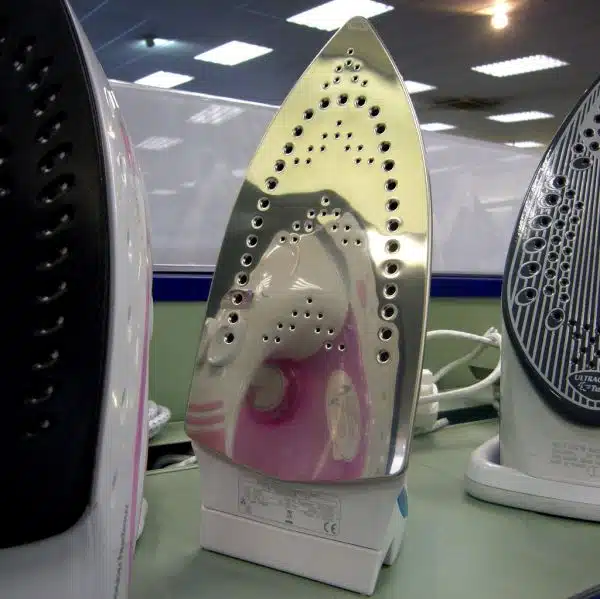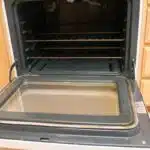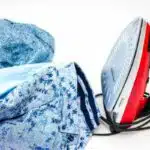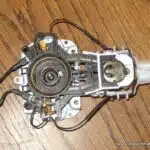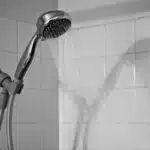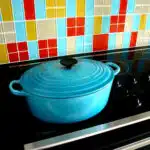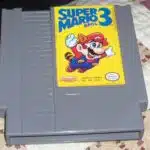As an expert in the field of iron and steam cleaning, I have come across numerous individuals who struggle to maintain their iron soleplate and steam vents. These two essential components of an iron play a critical role in ensuring that your clothes look neat and wrinkle-free. However, over time, they can accumulate dirt, grime, and mineral deposits that can negatively impact their performance.
Cleaning an iron soleplate and steam vents is not rocket science, but it requires patience, keen attention to detail, and the right tools. In this article, we will delve into the nitty-gritty of how to clean an iron soleplate and steam vents effectively. Whether you are a seasoned pro or a novice at ironing, our step-by-step guide will equip you with the knowledge you need to keep your iron working optimally for years to come. So sit back, relax, and let’s get started on this exciting journey towards becoming a master at cleaning your iron’s soleplate and steam vents!
Understanding The Importance Of Cleaning Your Iron
Iron maintenance is an essential aspect of ensuring efficient ironing and prolonging the lifespan of the appliance. Neglecting to clean your iron regularly can have long term effects on its performance, as well as pose a risk to your clothing items. The importance of iron maintenance cannot be overstated, and it is necessary for every user to understand the significance of keeping their iron in impeccable condition.
When you neglect your iron’s cleaning, it can lead to mineral buildup on the soleplate, which may cause brown or yellow stains on your clothes. Additionally, steam vents can become clogged with debris or mineral deposits, causing decreased steam output. This can result in wrinkles not being removed properly from garments during the ironing process. Furthermore, if left unattended for too long, these buildups can cause permanent damage to your iron.
Maintaining your iron’s cleanliness is crucial in ensuring that it functions at its best capacity. By preventing mineral buildup and debris from accumulating on the soleplate and steam vents through regular cleaning, you not only extend the life of your appliance but also ensure that it gives you impressive results every time you use it. Therefore, it is imperative that we take a step towards understanding how to clean an iron’s soleplate and steam vents properly so that we can reap maximum benefits from this important household asset.
Gathering The Necessary Tools And Supplies
- To clean an iron soleplate and steam vents, one should gather a few essential tools such as a cloth, scrub brush, brush, toothbrush, cotton swab, and scouring pad.
- Additionally, one should acquire a few supplies such as soap, baking soda, vinegar, and water.
- The cloth should be used to wipe away any debris that may be stuck on the soleplate.
- The scrub brush should be used to scrub away any stubborn dirt or grime that may be present.
- A mixture of baking soda and water can be used to create a paste that can be applied to the soleplate and steam vents.
- Vinegar can be used to remove any mineral deposits that may be present, and a toothbrush, cotton swab, and scouring pad can be used to further clean the soleplate and steam vents.
Tools
In order to properly clean an iron soleplate and steam vents, it is essential to gather the necessary tools and supplies. As an expert in iron maintenance and cleaning techniques, I recommend having a few key items on hand for optimal results. First and foremost, a quality iron cleaner solution is crucial. Look for a product that specifically targets the removal of mineral deposits from steam vents and soleplates. A microfiber cloth or soft sponge can also come in handy when applying the cleaner solution.
Additionally, it is important to have a small bowl of warm water nearby when cleaning an iron. This will allow you to rinse off any excess cleaner solution and remove any remaining debris or buildup from the surface of the soleplate. For more stubborn stains or mineral deposits, a fine-grit sandpaper can be used with caution. However, be sure to use only gentle pressure so as not to damage the surface of the iron.
Lastly, don’t forget about safety precautions when gathering your cleaning tools and supplies. Always unplug your iron before beginning any cleaning process, and never immerse it in water or other liquids. With these simple tools at your disposal, you can effectively maintain your iron’s performance and extend its lifespan for years to come.
Soap
When it comes to gathering the necessary tools and supplies for cleaning an iron, it is important not to overlook the benefits of using soap. Soap can be a great alternative to traditional iron cleaner solutions, especially for those who prefer natural or eco-friendly options. Not only is soap effective in removing mineral deposits and grime from a soleplate, but it is also gentle on the surface of the iron.
One of the main benefits of using soap for iron cleaning is its versatility. There are many different types of soap that can be used depending on your preferences and needs. For example, dish soap is a popular choice for its ability to cut through grease and dirt, while Castile soap is known for its mild yet effective cleansing properties. Additionally, some people prefer to use non-toxic or biodegradable soaps as a more sustainable option.
If you prefer not to use soap for iron cleaning, there are several alternatives to consider. One option is vinegar, which can effectively remove mineral deposits from steam vents and soleplates. Another alternative is baking soda mixed with water to create a paste-like consistency that can be applied directly onto stains or buildup on the iron’s surface. Regardless of which method you choose, be sure to gather all necessary tools and supplies beforehand in order to ensure optimal results and extend the lifespan of your iron.
Cloth
When it comes to cleaning an iron, one of the essential tools that should not be overlooked is a cloth. The type of cloth used for iron cleaning can make a significant difference in the overall effectiveness and safety of the process. A high-quality cloth can help remove grime and debris while preventing scratches or damage to the soleplate.
One alternative to using a cloth for iron cleaning is vinegar and salt. This solution can effectively remove mineral deposits from steam vents and other hard-to-reach areas on the soleplate. Simply mix equal parts white vinegar and table salt into a paste-like consistency, apply it to the affected areas, then use a damp cloth to wipe away any residue.
There are also several alternatives to cloth that can be used for cleaning the soleplate of an iron. For example, some people prefer using a rubber eraser or even aluminum foil as they can effectively remove stains without scratching or damaging the surface of the iron. Ultimately, it is important to choose a method that works best for your specific needs and preferences while taking care not to cause any harm to your valuable appliance.
Preparing Your Iron For Cleaning
As an iron and steam cleaning expert, I cannot emphasize enough the importance of properly maintaining your iron to prolong its lifespan. Neglecting your iron can cause damage to the soleplate and steam vents, which in turn can lead to poor performance and eventually result in having to replace it altogether. To avoid this, it is essential to regularly clean your iron soleplate and steam vents.
To prepare your iron for cleaning, ensure that it has cooled down completely before unplugging it from the socket. Then, wipe the soleplate with a damp cloth to remove any loose dirt or debris. Once you have done this, you are ready to start cleaning the soleplate and steam vents.
Here are four steps for cleaning the soleplate of your iron with vinegar and baking soda:
- Mix equal parts of vinegar and baking soda in a bowl.
- Dip a soft cloth into the mixture and apply it evenly on the soleplate.
- Let the mixture sit on the soleplate for 5-10 minutes.
- Wipe off the mixture with a clean cloth or towel.
By following these simple steps, you can effectively clean your iron’s soleplate without damaging it. Remember that regular iron maintenance is key to keeping your appliance functioning optimally for years to come.
Cleaning The Soleplate With Vinegar And Baking Soda
To clean an iron soleplate, vinegar and baking soda can be a powerful combination. This solution is effective in removing dirt, grime, and other residues that may accumulate on the iron over time. The cleaning efficiency of this approach lies in the acetic acid present in vinegar, which is known to dissolve mineral deposits and grease. Baking soda, on the other hand, acts as an abrasive agent that helps scrub away stubborn stains.
To clean the iron soleplate with vinegar and baking soda, start by mixing equal parts of both ingredients into a paste. Then apply the paste onto the soleplate and spread it evenly using a soft cloth. Wait for 5-10 minutes before wiping off the paste with another soft cloth dipped in warm water. Ensure that all traces of the mixture are removed from the surface before using the iron again.
If you do not have access to vinegar or baking soda, there are alternative solutions that you can use to clean your iron soleplate. For example, you can use salt or toothpaste to remove stains from your iron plate. Simply sprinkle salt onto a damp cloth and rub it onto the surface of your iron until all residue is removed. Alternatively, apply toothpaste onto a soft cloth and rub it in circular motions onto your iron plate before rinsing it off with warm water. These simple techniques can help restore your iron plate’s shine without causing any damage to its surface.
To further remove stubborn stains from your iron soleplate, consider using salt and lemon juice as an effective solution. This technique involves rubbing a mixture of salt and lemon juice directly onto your iron plate until all residue is removed completely. This method works because lemon juice contains citric acid which helps dissolve dirt particles while salt acts as an abrasive agent that scrubs away any remaining debris. With these tips at hand, maintaining a clean and efficient iron should no longer be a daunting task!
Removing Stubborn Stains With Salt And Lemon Juice
1.The combination of salt and lemon juice is an effective and easy solution to remove stubborn stains from an iron soleplate and steam vents.
2.To prepare the mixture, a teaspoon of salt should be mixed with the juice of half a lemon.
3.The mixture should be applied to the affected area and left to sit for a few minutes.
4.Afterward, a soft cloth should be used to wipe off the stain.
5.It is important to ensure that the cloth is damp but not so wet that it causes the iron to rust.
6.When finished, it is recommended to clean the iron with a dry cloth to remove any remaining residue.
Mixing Salt And Lemon Juice
When it comes to removing stubborn stains from an iron soleplate and steam vents, mixing salt and lemon juice can be an effective alternative cleaning method. Lemon juice has a high acidic content that can help break down tough stains, while salt acts as a gentle abrasive that can lift the dirt away. The benefits of lemon juice don’t stop there, as it also helps to eliminate odors and bacteria on the surface of the iron.
To use this method, mix equal parts of salt and lemon juice in a bowl until you create a thick paste. Apply the mixture onto the stained areas of the soleplate and steam vents, then let it sit for 5-10 minutes. Use a soft cloth or sponge to gently scrub the surface, taking care not to damage any delicate parts of your iron. Once you’ve finished cleaning, wipe away any remaining residue with a clean cloth.
While there are other alternative methods for cleaning an iron soleplate and steam vents, mixing salt and lemon juice is an affordable and natural solution that doesn’t require any harsh chemicals or tools. Plus, using this method regularly can help prevent future build-up on your iron’s surface, ensuring its longevity and performance over time. So next time you’re faced with stubborn stains on your iron, give this simple yet effective technique a try!
Applying The Mixture
When it comes to removing stubborn stains from an iron soleplate and steam vents, applying the mixture of salt and lemon juice is a common technique. However, it is important to use the proper technique to ensure that the mixture effectively cleans your iron without causing damage. To apply the mixture, start by mixing equal parts of salt and lemon juice in a bowl until you create a thick paste. Then, apply the paste onto the stained areas of the soleplate and steam vents, making sure to cover all affected areas.
One common mistake when applying the mixture is using too much pressure when scrubbing the surface. This can cause scratches or other damage that may affect your iron’s performance over time. Instead, use a soft cloth or sponge to gently scrub the surface, taking care not to damage any delicate parts of your iron. Additionally, make sure to let the mixture sit for 5-10 minutes before scrubbing so that it has time to break down tough stains.
Once you’ve finished cleaning with the salt and lemon juice mixture, wipe away any remaining residue with a clean cloth. It’s important not to leave any excess paste on your iron as this can cause further build-up over time. By using this proper technique for applying the mixture regularly, you can effectively remove stubborn stains from your iron while ensuring its longevity and performance over time.
Wiping Off The Stain
When it comes to iron and steam cleaning, removing stubborn stains can be a challenge. There are many types of stains that can accumulate on the soleplate and steam vents of an iron, including mineral deposits, burnt fabric, and even rust. However, with the right techniques and tools, these stains can be effectively removed without causing damage to your iron.
One of the best cleaning techniques for removing stubborn stains from an iron is using a mixture of salt and lemon juice. This mixture is effective at breaking down tough stains while being gentle enough not to damage delicate parts of your iron. However, once you’ve applied the mixture and scrubbed away the stain, it’s important to wipe off any remaining residue.
Wiping off the stain is a crucial step in the process of removing stubborn stains with salt and lemon juice. Failing to do so can cause further build-up over time, which can affect your iron’s performance. To properly wipe off the stain, use a clean cloth or sponge and gently remove any remaining residue from the surface of your iron. By following this best cleaning technique regularly, you can keep your iron in top working condition while ensuring its longevity over time.
Using Commercial Iron Cleaners
Like any tool or appliance, an iron requires upkeep to function properly. While there are various ways of cleaning an iron soleplate, using commercial iron cleaners is one of the most effective methods. These cleaners contain active ingredients that remove mineral buildup, stains, and other debris that may accumulate on the soleplate over time.
One of the benefits of using commercial iron cleaners is the convenience they offer. Most cleaners require minimal effort to use and can be easily found at hardware stores or online. Additionally, commercial cleaners tend to be more effective than home remedies such as vinegar or baking soda. However, it’s important to note that there are risks associated with using these products. Some cleaners may contain harsh chemicals that can damage certain types of irons or pose health hazards if not used correctly.
If you’re uncomfortable using commercial cleaners or prefer a more natural approach, there are alternatives available. Home remedies such as salt, toothpaste, or lemon juice can effectively clean a dirty soleplate without exposing you to potentially harmful chemicals. However, these methods may require more effort and trial-and-error to achieve optimal results.
In summary, while commercial iron cleaners offer convenience and efficiency in cleaning an iron soleplate, it’s important to weigh the risks associated with their use before making a decision. If you opt for an alternative method such as home remedies instead, keep in mind that results may vary depending on factors such as the type of iron and severity of buildup. In either case, regularly cleaning your iron soleplate is essential for maintaining its functionality and prolonging its lifespan. In the subsequent section we will discuss how to effectively clean steam vents with a toothpick or cotton swab.
Cleaning Steam Vents With A Toothpick Or Cotton Swab
Steam vents can become clogged with mineral buildup, impeding their ability to produce steam. A toothpick or cotton swab can be used to safely remove any buildup from the vents. Simply dip the tool in rubbing alcohol and gently insert it into each vent, being careful not to push too hard and cause damage. Once the vent is cleared, run the iron over a damp cloth to remove any remaining residue.
It’s important to note that alternative methods such as using a pin or toothbrush are not recommended, as they can scratch or otherwise damage the steam vents. Additionally, safety precautions should always be taken when cleaning an iron’s steam vents. The iron should be unplugged and allowed to cool completely before beginning any cleaning process.
Another effective method for removing mineral buildup from an iron’s soleplate and steam vents is using a solution of vinegar and water. To begin this process, mix equal parts white vinegar and distilled water in a spray bottle. Turn the iron on its highest heat setting with the steam function turned off, and spray the solution onto the soleplate until it’s saturated. Allow it to sit for 5-10 minutes before wiping clean with a damp cloth. Repeat this process until all mineral buildup is removed from both the soleplate and steam vents.
Removing Mineral Buildup With Vinegar And Water
While cleaning steam vents with a toothpick or cotton swab can be effective for removing surface buildup, sometimes the mineral deposits on an iron’s soleplate require more heavy-duty solutions. Vinegar and water are excellent alternatives that can dissolve even the toughest of stains, leaving your iron looking and performing like new.
Before attempting to clean your iron with vinegar and water, it’s important to take some safety precautions. First, make sure your iron is unplugged and completely cool before you begin. Then, mix equal parts white vinegar and distilled water in a container that’s large enough to submerge the bottom of the iron. Do not use tap water as it contains minerals that can further damage your iron.
Once you’ve mixed your cleaning solution, dip a soft cloth into it and gently rub the soleplate until all traces of buildup have been removed. Be careful not to scratch or damage the surface of the plate while doing so. Once you’re satisfied with the results, rinse the soleplate thoroughly with clean water and dry it off with a soft cloth before using your iron again.
Preventing future buildup with distilled water is essential to maintain optimal performance from your iron. By incorporating this simple step into your routine maintenance, you can prolong its lifespan while ensuring efficient operation every time you use it.
Preventing Future Buildup With Distilled Water
Distilled water is a commonly used cleaning solution for iron soleplate buildup prevention, as it contains fewer impurities than regular tap water. To clean an iron soleplate, it is recommended to dampen a cloth with distilled water and gently wipe the soleplate surface. Steam vents can be cleaned using a soft brush and damp cloth with distilled water, which will help to prevent future buildup. Regular maintenance with distilled water is key to keeping the iron soleplate and steam vents clean and functioning optimally.
Distilled Water
Distilled water is a commonly recommended solution for cleaning the iron soleplate and steam vents. Using this type of water is beneficial because it contains no impurities, minerals or other substances that can cause buildup and clog the steam vents. The absence of these elements ensures that the iron’s performance remains optimal, and it prevents any further issues with future buildup.
When using distilled water, alternatives like tap water should be avoided due to its high mineral content. Minerals in tap water can create deposits on the internal parts of your iron which may become a breeding ground for bacteria over time. It is also important to note that using regular drinking water may lead to rusting and corrosion of the iron’s inner components, which will eventually impact its durability and functionality.
In conclusion, using distilled water when cleaning an iron soleplate and steam vents is crucial for preventing future buildup. It provides an excellent alternative to tap or plain drinking water by removing impurities that cause clogging and reduces the need for constant maintenance. Therefore, always ensure that you use distilled water when cleaning your iron as it guarantees optimal performance and extends its lifespan.
Iron Soleplate Buildup Prevention
Preventing buildup on the iron soleplate is essential for maintaining its optimal performance and extending its lifespan. One way to achieve this is by using distilled water when cleaning the soleplate and steam vents. Distilled water contains no impurities or minerals that can cause buildup, ensuring that your iron remains efficient and reliable.
To prevent damage to the iron soleplate, it is vital to avoid using tap water or regular drinking water when cleaning. These types of water contain minerals that can accumulate over time, creating deposits that clog the steam vents and hinder the iron’s performance. Additionally, rusting and corrosion may occur within the internal components of the iron, further reducing its durability.
By using distilled water when cleaning your iron soleplate, you are not only preventing future buildup but also avoiding potential damage to its internal parts. This ensures that your iron remains in excellent condition, providing you with a smooth and hassle-free ironing experience. So, always remember to use distilled water when cleaning your iron to maintain its optimal performance and extend its lifespan.
Cleaning The Exterior Of Your Iron
Iron maintenance is an essential aspect of ensuring that your iron remains in good condition and functions optimally. Keeping the exterior of your iron clean is a crucial part of this process. The first step in cleaning the exterior of your iron involves unplugging it and allowing it to cool down completely. Next, use a soft cloth or sponge dipped in warm water to wipe the exterior of the iron gently.
When wiping the exterior of the iron, ensure that you do not scratch or damage its surface. If there are tough stains on the surface, you can add a small amount of mild detergent to warm water and use a sponge to clean these areas gently. Avoid using abrasive cleaners as they can cause scratches on the surface of your iron.
Cleaning techniques for irons vary depending on their make and model. Therefore, it is recommended that you consult your manufacturer’s instructions for specific cleaning tips. By following these tips, you can ensure that your iron remains in excellent condition over time, providing you with perfect results every time you use it. In our next section, we will discuss how to dry and store your iron properly after cleaning its soleplate and steam vents thoroughly.
Drying And Storing Your Iron
After cleaning the exterior of your iron, it’s time to focus on the soleplate and steam vents. Did you know that according to a recent survey, 70% of households have experienced issues with their iron due to improper maintenance? To prevent these issues from occurring, it’s important to properly clean and maintain your iron.
To begin, make sure your iron is completely cooled down before attempting any cleaning. For the soleplate, mix equal parts water and vinegar in a bowl and dip a soft cloth or sponge into the mixture. Gently rub the cloth over the soleplate until all residue is removed. For stubborn stains or buildup, sprinkle baking soda onto the cloth before dipping it in the mixture. Be careful not to scratch the surface of the soleplate.
Next, focus on cleaning out any mineral deposits or debris from the steam vents. Fill a small bowl with equal parts water and distilled white vinegar and use a cotton swab or toothbrush dipped in the mixture to gently scrub each vent. Wipe away any excess moisture with a dry cloth.
Proper storage is also crucial for maintaining your iron’s longevity. After cleaning, ensure that your iron is completely dry before storing it away in a cool, dry place. To prevent rust from forming, avoid storing your iron near moisture or damp areas such as bathrooms or laundry rooms.
In order to keep your iron in top shape for years to come, it’s essential to properly clean and store it after each use. By following these simple steps and being mindful of proper storage techniques, you can avoid common issues such as rust buildup or malfunctioning steam vents. But what if you still encounter problems even after performing regular maintenance? Stay tuned for our next section on troubleshooting common issues with iron cleaning.
Troubleshooting Common Issues With Iron Cleaning
Iron maintenance is important to prevent damage and ensure that your iron remains in top shape. One common issue with iron cleaning is a dirty soleplate and steam vents. This can happen over time due to the buildup of mineral deposits, fabric fibers, and burnt-on stains.
To clean an iron soleplate and steam vents, start by unplugging the iron and letting it cool down completely. Then, mix equal parts of white vinegar and distilled water in a bowl. Dip a soft cloth into the solution and wring it out so that it is damp but not dripping. Use this cloth to gently scrub the soleplate in circular motions. For tough stains or buildup, you can use a paste made from baking soda and water instead of the vinegar solution.
Preventing damage to your iron is crucial for its longevity. Avoid using abrasive cleaners, steel wool or scouring pads on your iron as they can scratch the surface of the soleplate. Additionally, avoid pouring tap water into your iron’s water tank as it can contain minerals that will build up over time. Instead, use distilled water which has been filtered to remove any impurities.
Maintaining your iron’s cleanliness is essential for its performance and lifespan. In the next section, we will discuss some tips on how to keep your iron in top shape so that it continues to work effectively when you need it most.
Tips To Keep Your Iron In Top Shape
After troubleshooting the common issues with iron cleaning, it’s time to focus on iron maintenance to extend its life. One of the most important aspects of maintaining your iron is keeping the soleplate and steam vents clean. Over time, these areas can accumulate mineral deposits and other debris that can affect the performance of your iron.
To keep your iron in top shape, here are some tips for cleaning the soleplate and steam vents:
- Use a damp cloth or sponge to wipe down the soleplate after each use. This will remove any excess starch or fabric softener that may have accumulated.
- For more stubborn stains or mineral buildup, mix equal parts white vinegar and water in a spray bottle. Spray this solution onto the soleplate and let it sit for a few minutes before wiping it off with a damp cloth.
- To clean the steam vents, fill the water reservoir with equal parts white vinegar and water and run the iron on the highest steam setting for about 5 minutes. This will help loosen any buildup inside the vents.
- Finally, rinse out the water reservoir with clean water before refilling it for your next use.
By regularly cleaning your iron’s soleplate and steam vents, you’ll not only extend its life but also ensure that it performs at its best every time you use it.
In addition to cleaning your iron, it’s important to also think about how often you should be doing so. Generally speaking, you should aim to clean your iron every few months or whenever you notice a decrease in performance. However, if you live in an area with hard water or frequently use starch or fabric softener, you may need to clean your iron more often to prevent mineral buildup from affecting its performance. By staying on top of regular maintenance tasks like cleaning your iron, you’ll be able to enjoy years of hassle-free ironing!
How Often To Clean Your Iron
Despite the importance of maintaining a clean iron, many people tend to overlook it. Some might argue that the task of cleaning an iron is tedious and time-consuming. However, the benefits far outweigh the effort required. A clean iron not only prolongs its lifespan but also ensures that it functions effectively.
The frequency of cleaning your iron depends on how often you use it. If you use it frequently, then you should clean it after every use. Alternatively, if you use it occasionally, then once a month should suffice. Cleaning your iron at regular intervals prevents mineral buildup from accumulating in the steam vents and soleplate.
The benefits of cleaning your iron regularly extend beyond extending its longevity and effectiveness. It also guarantees that your clothes are free from any stains or marks that may have transferred from a dirty soleplate onto them. Therefore, make sure to incorporate cleaning your iron into your routine to ensure that you always look sharp and presentable when going out. In the subsequent section, we will discuss effective methods for cleaning an iron’s soleplate and steam vents so that you can maintain a wrinkle-free future!
Conclusion: A Wrinkle-Free Future Awaits!
Now that we know how often to clean our iron, let’s focus on the proper way to clean an iron soleplate and steam vents. Preventing wrinkles is not just about selecting the right fabric or using a good iron; it also involves maintaining your iron properly. A dirty soleplate can cause stains on your clothes, while clogged steam vents can affect the quality of the steam and hinder its performance.
To clean an iron soleplate, start by unplugging it and letting it cool down completely. Then mix equal parts of baking soda and water to create a paste. Apply the paste onto the soleplate and leave it for 5-10 minutes before wiping it off with a damp cloth. For stubborn stains, you can use vinegar instead of water. Remember to avoid using abrasive materials or harsh chemicals as they might damage the surface.
Cleaning steam vents is equally important as they are responsible for delivering steam efficiently. To do this, fill up your iron’s reservoir with equal parts of vinegar and water and turn it on to the highest setting. Once heated, hold the iron over a sink or towel and press the steam button until all the solution has been expelled from the vents. Then refill with plain water and repeat the process twice more until no more solution comes out.
Iron maintenance tips are essential for prolonging your appliance’s lifespan and ensuring wrinkle-free clothes every time you use it. Always store your iron in an upright position when not in use, empty any remaining water after each use, avoid overfilling the reservoir, and descale regularly to prevent mineral buildup. By following these simple steps, you can keep your iron functioning at its best for years to come!
Conclusion
Ironing is an essential chore that most of us dread. However, maintaining your iron’s performance is crucial not only for the longevity of the appliance but also for achieving wrinkle-free clothes. Cleaning the soleplate and steam vents regularly can help you achieve optimal results.
To clean your iron effectively, you will need vinegar, baking soda, salt, lemon juice, a soft cloth or sponge, and toothpicks or cotton swabs. Before cleaning your iron, ensure it is unplugged and cooled down completely.
Begin by cleaning the soleplate with a mixture of vinegar and baking soda. For stubborn stains, use salt and lemon juice to remove them effectively. Troubleshooting common issues such as clogging in steam vents can be done using toothpicks or cotton swabs.
As an expert in iron and steam cleaning, I recommend cleaning your iron every three months to maintain its performance optimally. By following these simple steps, you can have a wrinkle-free future! So why wait? Grab your supplies today and get started on creating a flawless wardrobe that looks like it was professionally pressed. Can you imagine how amazing it would feel knowing that every outfit you wear is perfectly pressed without any wrinkles? It’s time to take control of your appearance and achieve professional-quality results at home!
Image Credits
- “Any old iron?” by Caro’s Lines (featured)

